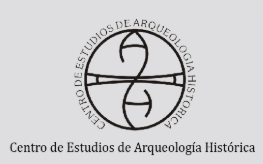THE RAILWAY HERITAGE OF PAMPEAN ECOTONE
DOI:
https://doi.org/10.35305/tpahl.v14i1.149Keywords:
Ecotone, historical archaeology, cultural heritage, railway materiality, current usesAbstract
This work addresses the preliminary survey and analysis of the material vestiges corresponding to the railway phenomenon, which can be seen in the ecotonal landscape of the province of Buenos Aires. The tasks focused on the railway stations installed in the late nineteenth and early twentieth centuries in the municipalities of FlorentinoAmeghino, Rivadavia, TrenqueLauquen, Guaminí, Adolfo Alsina, Puan, Coronel Suárez, Coronel Pringles, Saavedra and Tornquist. The railway phenomenon left traces in both urban and rural areas, becoming a strong transforming agent of the landscape. It also had a fundamental implication in the foundation and development of the peoples of the area, in some cases also the decline of both processes (urban and railway) was intertwined. The railway materiality has particular characteristics that were reflected in the various built: with stations, warehouses, workshops, shelters, water, lamps, water and fuel tanks, nomenclators, signal booths, guarantees, toilets, hospital services, various squares, dwellings for hierarchical staff and employees of different categories. The variables studied were type of construction, architectural style, materials used, applied technology, ornamental details, railway network to which it was integrated, among others. Finally, the assessment made from the present towards this materiality was considered, with the state of conservation and deterioration of the remaining structures, their integrity, the re-use and contemporary practices of the buildings, for purposes other than those intended.







